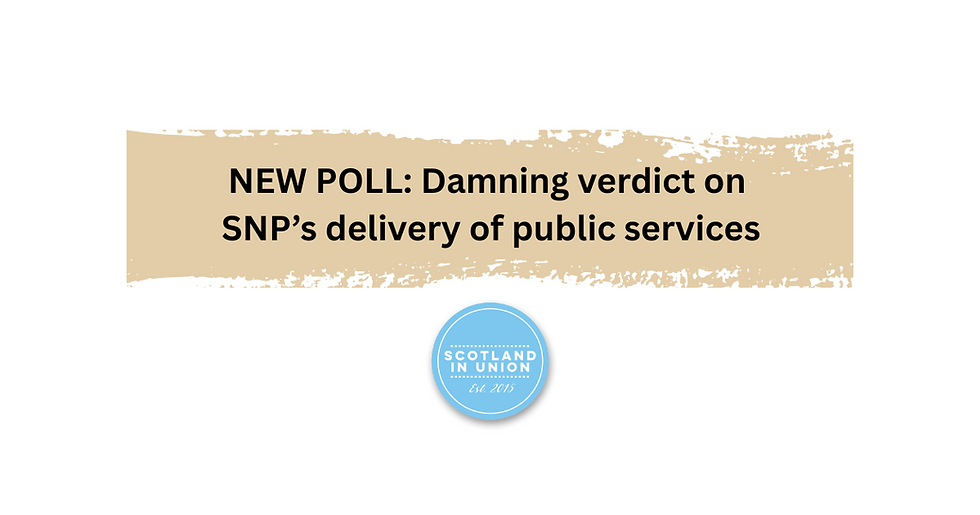Professor Ronald MacDonald on GERS
- Scotland in Union

- Aug 29, 2020
- 3 min read
Updated: Feb 5, 2024
This year’s GERS deficit figure, and the likely large deficit created by the pandemic, again underscore the importance of the fiscal risk pooling and sharing (fiscal insurance) that occurs in political and monetary unions such as the UK. Such fiscal insurance becomes most evident, in the form of automatic stabilisers and extra discretionary government spending, when large macroeconomic shocks occur, such as the financial crisis in 2008, the oil price shock of 2015 and now the pandemic with the large induced macroeconomic shocks that it has created. How would an independent Scotland replace this fiscal insurance and absorb such macroeconomic shocks? Would borrowing be sufficient?
To answer these questions, it is important to note that there is another deficit, as important as the fiscal deficit but rarely mentioned in the independence debate, and that is the current account deficit of the balance of payments. This balance is a distinct statistical entity from the fiscal position. Scotland has a persistent deficit on its current account of around 10% of GDP. Currently the tab for this is also picked up by the rest of the UK. An independent Scotland would have to finance this deficit too. So how would Scotland’s twin deficits, and particularly shocks to these deficits, be handled under independence? The answer depends critically on the currency regime under independence.
Proponents of independence have hitherto focussed on two currency regimes: sterlingisation, a form of fixed exchange rate, and a new currency fixed one-to-one to sterling. As I have consistently stated since 2014 the only currency regime that can begin to replace the current risk sharing model, especially in any transition period, is a flexible exchange rate regime, the regime run by the UK since 1973. This is because a flexible exchange rate acts as a macroeconomic shock absorber: as shocks hit the economy the exchange rate moves to reallocate resources and this has a stabilising effect on employment, output, the balance of payments and the fiscal deficit.
Could borrowing on international capital markets be sufficient to cover expected future fiscal deficits and the balance of payments deficit in an independent Scotland? Borrowing is clearly an attractive proposition given the historically low rates of interest available. For example, during the recent pandemic period the average rate of interest on 10-year UK gilts is 0.5%.
However, a newly minted independent Scotland without the long history of credibility that the Bank of England and Treasury have, would have to pay a premium on its borrowing over UK rates. The size of the premium would critically depend on the underlying exchange rate regime, since potential devaluation and default risk will be critical in its determination. A base line of 2% over the UK rate of 0.5% is a reasonable starting point.
With sterlingisation an Independent Scotland would be borrowing vast amounts of money in a foreign currency that would have to be paid back in that currency. Since sterlingisation offers zero adjustment to the balance of payments deficit it would be regarded as non- credible by international capital and would require ever higher premiums on the debt, thereby precipitating a classic currency crisis necessitating a rapid move to a new and significantly devalued currency: the combination of borrowing large quantities of funds in a foreign currency with a unitary probability of the revaluation of that debt is clearly a recipe for national bankruptcy.
A new separate currency pegged to sterling would essentially have the same outcome as sterlingisation, albeit the magnitude would be less given debt would be denominated in the home currency. It would still produce a classic currency crisis and at great cost in terms of its implications for public services and tax.
A separate currency freely floating on foreign exchange markets would be credible to international capital since it would provide an adjustment mechanism for the balance of payments and facilitate borrowing at a reasonable premium over the UK benchmark. It would inevitably have associated costs for trade and for the valuation of assets and liabilities. But even in this best-case scenario borrowing on its own would not be sustainable indefinitely unless a very rapid rate of economic growth was forthcoming. Inevitably, some mix of cuts to public services and or tax rises would be required although they would be of a lesser order of magnitude than the currently proposed alternatives.
Borrowing is not a tenable long-term solution to the twin deficits problem for any country. Under either of the proposed currency regimes for an independent Scotland borrowing is not a short-term solution either and would be massively costly to Scottish citizens.
If nothing else, the induced macroeconomic shock that the pandemic represents should now surely signal a mature and objective debate on the costs and any benefits of Scottish independence. As things stand the costs massively dominate the benefits.
By Professor Ronald MacDonald, who is chair of Macroeconomics and International Finance at the Adam Smith Business School.










Comments